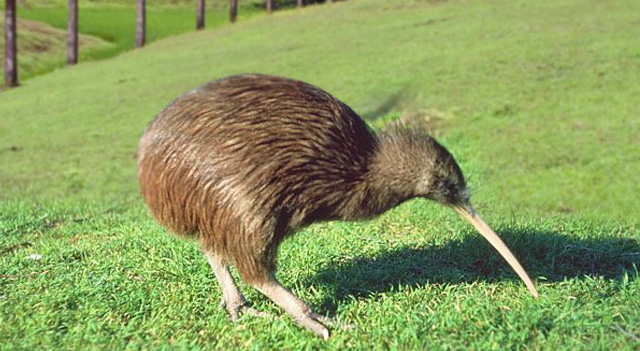New Zealanders were relieved Friday when new DNA research ruled out a connection between their iconic kiwi and birds native to rival Australia – but instead threw up an even bigger surprise as to the origins of the national mascot.

Research by Australia’s University of Adelaide showed the flightless, mostly nocturnal kiwi was most closely related to the extinct giant elephant bird, which lived in Madagascar off the east coast of Africa, Xinhua reported.
And the study also concluded that both the diminutive kiwi and the 2.3-metre tall elephant bird once flew, said a statement from the Museum of New Zealand Te Papa Tongarewa.
The study solved a 150-year-old evolutionary mystery about the origins of the giant flightless “ratite” birds, such as the emu and the ostrich, found across the southern continents and include some of the world’s largest birds, such as the extinct giant moa of New Zealand and elephant bird of Madagascar.
The different ratite species were long thought to have formed as the flightless birds were isolated by the separation of the southern continents over the last 130 million years.
However, ancient DNA extracted from the bones of two elephant birds held by the Museum of New Zealand revealed a close genetic connection with the kiwi, despite the striking differences in geography, morphology and ecology between the two.
“This result was about as unexpected as you could get,” Kieren Mitchell, researcher in Adelaide University, said in the statement.
“New Zealand and Madagascar were only ever distantly physically joined via Antarctica and Australia, so this result shows the ratites must have dispersed around the world by flight.”
The results corrected work in the 1990s by an Adelaide University professor, which had shown the closest living relatives of the kiwi were the Australian emu and cassowary.
“It’s great to finally set the record straight, as New Zealanders were shocked and dismayed to find that the national bird appeared to be an Australian immigrant,” Cooper joked in the statement.
“I can only apologize it has taken so long!”
The evidence suggested flying ratite ancestors had dispersed around the world right after the dinosaurs went extinct, before mammals dramatically increased in size and became the dominant group, said Cooper.
“We think the ratites exploited that narrow window of opportunity to become large herbivores, but once mammals also got large, about 50 million years ago, no other bird could try that idea again unless they were on a mammal free island, like the dodo.”